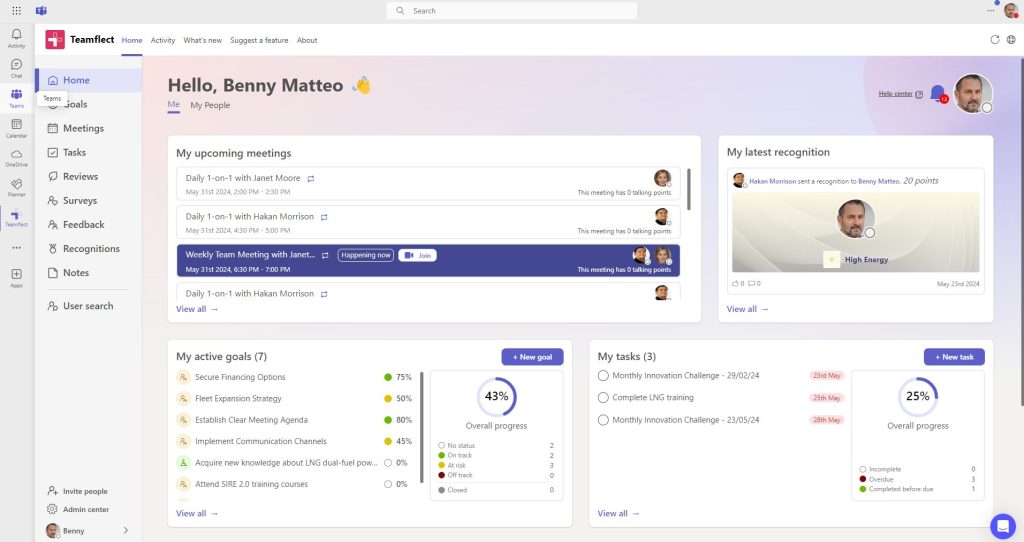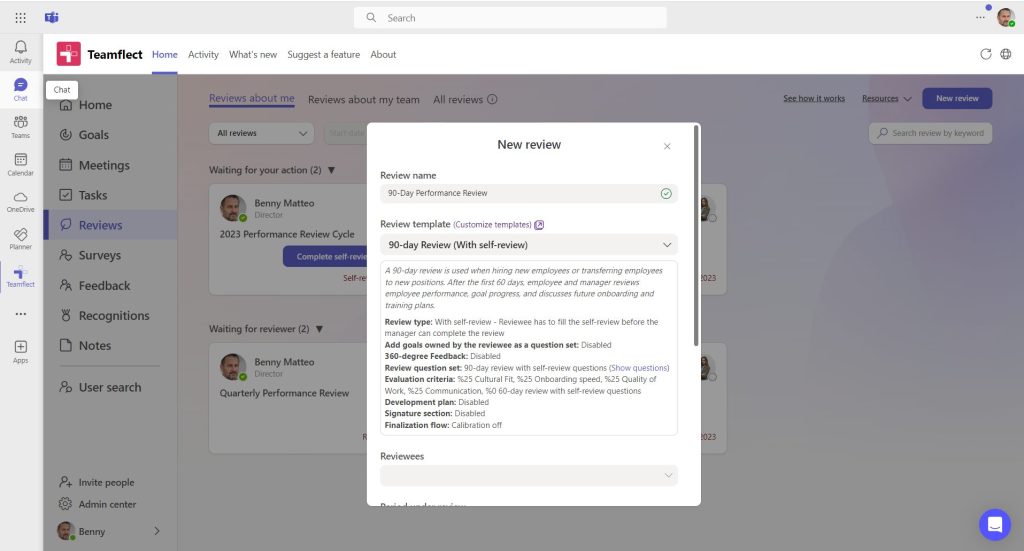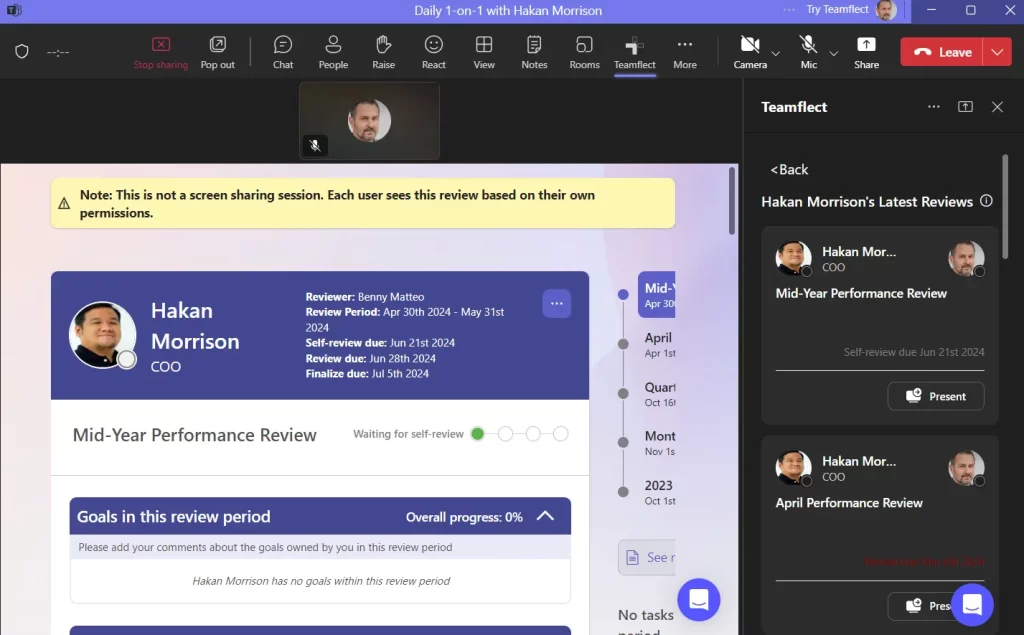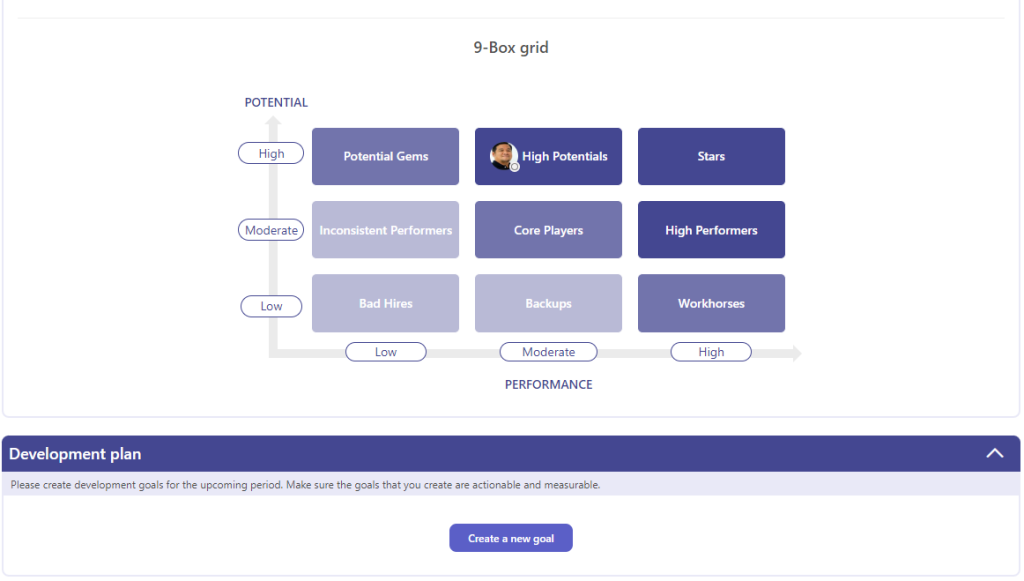The 90-day milestone is a pivotal point in any new hire’s journey. By this time, employees have had the opportunity to settle into their roles, understand the company culture, and contribute to the team.
This is why 90-day reviews are one of the most important steps in every single employee onboarding checklist.
In this article, we will go over how you can conduct the perfect 90-day reviews and cap off your employee onboarding process, right inside the communication platform of your choice!
Table of Contents
What is the purpose of 90-Day Reviews?
The initial 90-day period is critical for both the employee and the employer, as it allows sufficient time for the new hire to acclimate to their role, while still being early enough to address any issues before they become ingrained. So, the 90-day onboarding review serves to:
- Assess Job Fit and Performance: Evaluate how well the new hire is performing in their role, including their ability to meet job expectations and contribute to the team.
- Provide Constructive Feedback: Offer specific, actionable feedback that highlights the new hire’s strengths and areas for improvement.
- Set Future Objectives: Collaboratively set clear and achievable goals for the next evaluation period, ensuring alignment with the organization’s strategic objectives.
- Enhance Communication: Foster an open dialogue between the new hire and their manager, encouraging ongoing communication and support.
- Ensure Alignment with Company Culture: Assess how well the new hire is integrating into the company culture and adhering to the organization’s values and standard
Using Digitized Performance Review Templates
Before we move forward and discuss how exactly 90-day reviews can be conducted with remote teams or any form of performance appraisals for that matter, it is crucial to mention how they SHOULDN’T be practiced.
While using Excel spreadsheets or Word documents for 90-day reviews is common practice it is one of the most impractical ways of approaching performance evaluations. Excel and Word performance review templates are:
- Cumbersome to create from scratch.
- Notoriously difficult to analyze.
- Simply impractical to archive and return at a later date.
If you, however, already have certain templates in place that you would like to keep using, the video below provides you with a simple and effective way to digitize your existing review templates and use them inside Microsoft Teams & Outlook.
Step 1: Find The Right Performance Review Software For You
The best part of using communication and collaboration platforms such as Microsoft Teams or Outlook, is the ability to enhance them with the help of third-party applications.
While neither Microsoft Teams nor Outlook possesses performance appraisal capabilities of any kind, you can use a performance review software by an official Microsoft Partner, Teamflect, in order to conduct 90-day reviews inside Microsoft Teams and Outlook.
Teamflect is the highest-rated performance review application in the Microsoft Teams and Outlook ecosystems and functions seamlessly inside both platforms.

In order to start using this application, all you have to do is head over to the Teams App Store and simply search for Teamflect.
Since Teamflect uses your Microsoft Account for you to log in, you won’t need sign up or create a new account!

Teamflect draws your organizational chart directly from Entra ID, which means you won’t have to set anything up. The information about employees and team will already be accessible inside the app, just as it is in Microsoft Teams.
Step 2: Select Review Template
Performance appraisals, including 90-day reviews, are conducted through customizable performance review templates.
Teamflect has an extensive library of templates available for every possible performance review occasion. Users can use these templates as they are, customize them to fit their needs or opt to create new templates from scratch.

In order to conduct a 90-day onboarding review manually, you can simply:
- Enter Teamflect’s “Reviews” module.
- Select the 90-Day Onboarding Review Template
- Pick Reviewees
- Send The Review Out.
The best practice, however, is to automate your first 90 days performance review so the template is sent out automatically, 90 days into a new hire’s employment.
Automate Reviews to Save Time

You can automate your performance appraisals in multiple different scenarios. The best automation scenario for onboarding reviews is to set them up so they are conducted automatically, after a certain number of days.
Onboarding automation of any sort, whether you are automating onboarding tasks, onboarding surveys, or onboarding reviews, not only saves time and effort but also lowers the risk of mistakes being made in the onboarding process.
Step 3: Conducting The 90-Day Review
Once the automation is set and performance appraisals are sent out, reviewees not only receive notifications but also adaptive cards inside Microsoft Teams chat and e-mails in Outlook.
All the reviewees have to do is complete their self-appraisal section.
Performance review templates can be completed asynchronously and they can include sections such as:
- Goal Completion Rates within The Review Period
- 360-Degree Feedback
- Core Competencies & Responsibilities.
Discuss Review in Teams Meetings
Another great practice when conducting onboarding reviews remotely is to go through the template together.

When using the Teamflect application inside ongoing Teams meetings, users have the option to present their latest performance reviews.
These presentations are fully interactive and all parties can collaborate on and interact with the performance review as it is being presented inside the meeting.
Even as it is being presented, all parties can only see sections of the review that they are normally authorized to. For example, a reviewee can’t see the reviewer’s private notes about them, even if it is being presented.
These presentations are a great way to start conversations of growth, development, and improvement around 90-day reviews.
Step 4: Analysis & Goal Setting

Once the onboarding review is complete, the final step in the entire employee onboarding process is to analyze where the new hire stands in terms of talent, potential, and performance.
90-day reviews are also the perfect opportunity to set development goals for new hires as they set out on their journey into your organization. All of these and more can be done with ease inside the review template.
From Onboarding – Going Forward
The performance management journey starts with recruitment and stays an ever-evolving continuous process. Having the right tools to streamline and automate each and every aspect of it alongside performance reviews is always an asset to your organization.
If you are using Microsoft Teams or Outlook on a daily basis to communicate with your team, then you should consider trying Teamflect for absolutely free, today!


